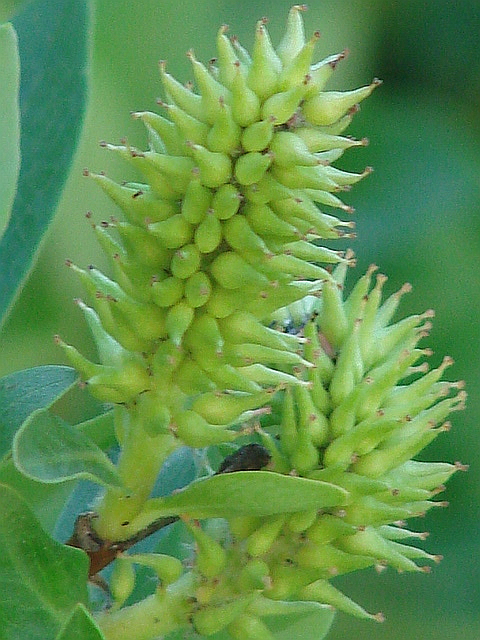Hosted by the University of Washington Herbarium, Burke Museum
Publication: Contr. U.S. Natl. Herb. 22: 321 (as farrae). 1921.
Origin: Native
Herbarium search: CPNWH
Notes: Not reported for WA by FNA. However, one specimen from Okanogan County annotated as S. farriae by George Argus in 2005.
FNA7: "Salix farriae is a cordilleran species ranging from Wyoming to central British Columbia with disjunct occurrences in northwestern British Columbia, western Northwest Territories, and southern Yukon. It is related to S. hastata, an amphiberingian species ranging from Scandinavia to southwestern Yukon and northwestern Northwest Territories. There may be reasons for treating these slightly different plants as S. hastata var. farriae, but R. D. Dorn (1975) maintained them as a species based on flavonoid differences. In a phenetic study (G. W. Argus 2007), the two taxa had dissimilarity values at the same level as other closely related species. They are treated here as species, primarily because their ranges are disjunct. They can be separated as follows:
Salix farriae is distinguished from S. hastata by having largest medial blades narrowly elliptic to elliptic, pistillate nectaries oblong or ovate, stipules on early leaves absent or rudimentary (sometimes foliaceous), branches strongly to weakly glaucous or not, floral bract apices rounded, and plants of the cordillera in Alberta and British Columbia, in Idaho, Montana, Oregon, and Wyoming; S. hastata has largest medial blades narrowly elliptic to broadly elliptic or broadly obovate, pistillate nectaries square, stipules on early leaves foliaceous (sometimes rudimentary), branches not glaucous, floral bract apices acute or rounded, and plants of Alaska, Northwest Territories, and Yukon.
Salix farriae and S. barclayi are sympatric in western Canada and the Pacific Northwest, where they are difficult to separate. Salix farriae can often be recognized by its largest medial leaves with at least some minute, ferruginous hairs on the adaxial midrib or blade surfaces; ferruginous hairs do not occur in S. barclayi. Its leaf margins also tend to be more nearly entire, but relatively short teeth are not infrequent. Such plants are sometimes interpreted as intergrades between S. farriae and S. barclayi (R. D. Dorn 1975). The variable leaf toothing also occurs in S. hastata and may not be a reliable indicator of intergradation. Salix farriae also differs from S. barclayi in usually having shorter anthers, 0.3-0.6 mm versus 0.6-1 mm in S. barclayi. See 61. S. barclayi."
Last updated 9/25/2021 by David Giblin.

